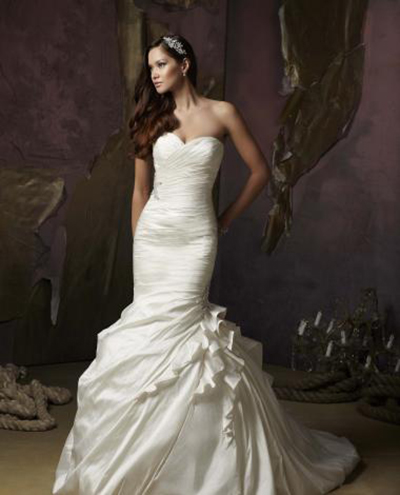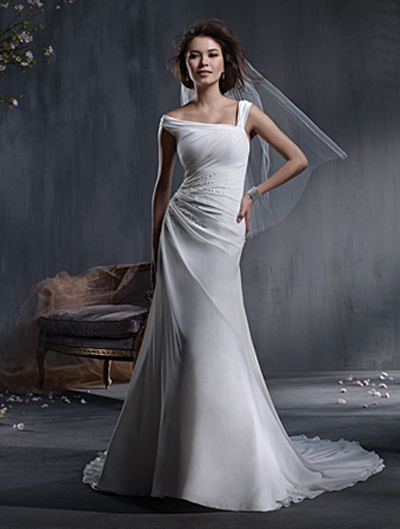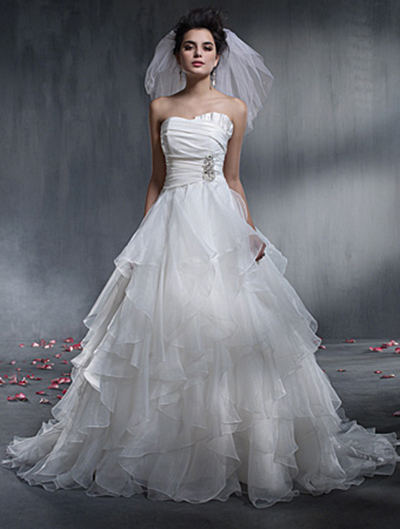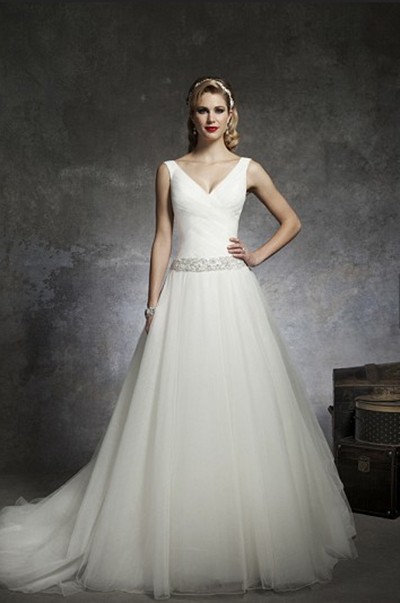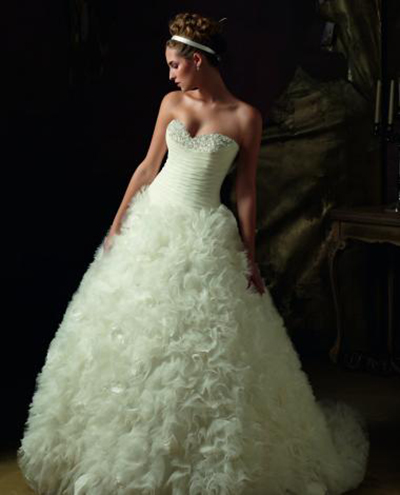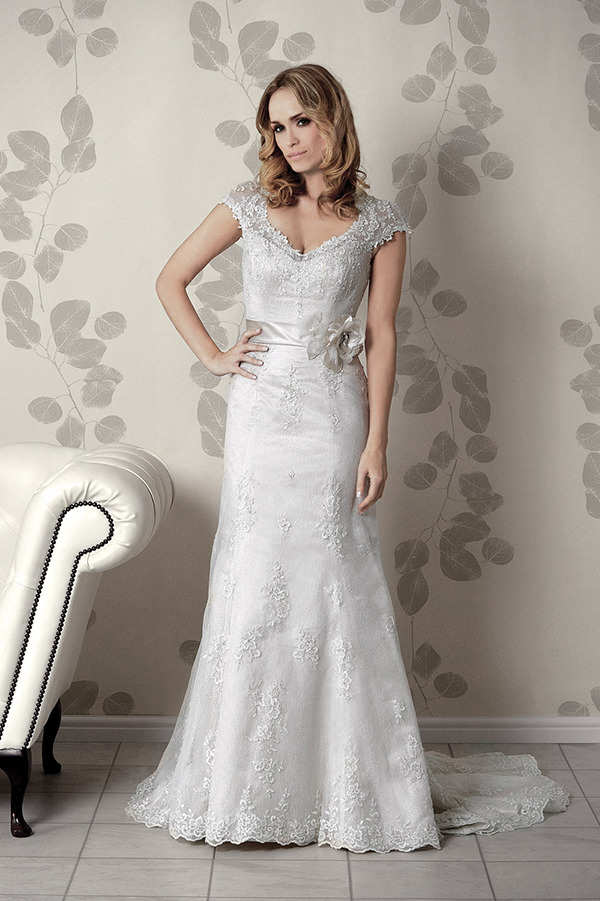In our quest to to tell you about the ins and outs of choosing your wedding gown, today we are talking fabrics, specifically how your choice of dress fabric looks and how it will either keep you warm on a winter’s morning or cool during your summer wedding and not the other way round! From chiffon to organza we’ve explained the lot, just to make sure you’re covered with the right choice!
Silk
Silk is the most expensive gown fabric, because it is a natural fibre made from silkworm cocoons.
A beautifully soft and smooth fabric, it’s best used on gowns that are sheath, column or empire line. Silk threads are woven to make several other fabrics including chiffon, organza and even tulle.
Satin
Satin is probably the most commonly used fabric for wedding gowns, as it’s durable and its weight is great for all skirt lengths.
Satin is a densely woven silk with a lustrous sheen on one side and matte finish on the other. There are several types of satin including Duchess satin, Italian satin and Slipper satin, all which vary in density.
Chiffon
Chiffon is delicate and floaty, soft and sheer and can be either transparent or semi-transparent. It can be made of either silk or rayon, with silk obviously being more expensive.
Layered chiffon is popular for flowing skirts, sleeves and wraps because of its romantic appearance.
Taffeta
Taffeta is a crisp fabric with an almost paper like texture.
Tafetta is very popular because of its slight shimmer and is often used on ballgowns and evening dresses. It’s a very lightweight fabric with a slight rib and is made from silk or synthetic fibres.
Tulle
Tulle is a machine made netting which is super lightweight and extremely fine, and usually has a hexagon shaped mesh effect.
It is mainly used for under skirts and veils, where it is layered.
Organza
Organza is a plain weaved lightweight fabric made from silk, rayon, nylon or polyester.
Although organza is lightweight, it is great for adding volume and stiffness thanks to the gum that is on the fibres, (natural gum on silk, engineered stiffness on manmade fibres.) Organza is a great choice for over skirts because it has just enough body to stand out, yet still move nicely.
Lace
Of course we all know what lace looks like, but did you know that lace was first made to replace embroidery? An embroidered piece can only be used on one piece of fabric, whereas lace can be created and then used on various dresses. Lace can look good both during summer and winter, and adds a real feminine touch.
There are several types of lace, all with different patterns, including Chantilly, Alencon, Cluny, Eyelet and Venice lace.
Have you decided on your wedding dress fabric? Let us know what you’re going for in a comment!

